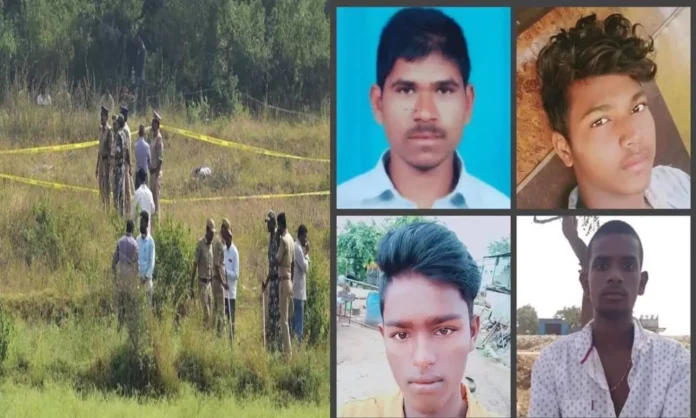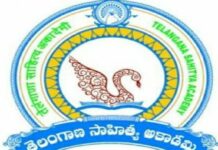(This is the second report on the public hearing by the inquiry commission, appointed by the Supreme Court, to probe the Hyderabad ‘encounter’ of 2019. Read the first and third reports here.)
The commission has been recently bringing the investigating officer’s attention to some missing or mismatching facts in the documents presented.
The inquiry commission constituted by the Supreme Court on December 12, 2019 to look into the Hyderabad encounter of 2019 continued its public hearings in Hyderabad.
The commission questioned the Investigation Officer (IO) Surender Reddy, DCP, Special Task Force for five days. He has faced 457 questions. The Commission’s knowledge of the case is meticulous to the last detail and framing of the questions are non-judgmental. Fair to the process and the witness, it has been patiently persuasive to elicit the facts, yet exercised enormous restraints from drawing any inferences from the demeanour of the witness.
The fundamental question before everyone concerned with the rule of law is to know the truth about circumstances that led to the death of four accused – Chennakesavulu, Jollu Shiva, Jollu Naveen and Mahammad Arif – on December 6, 2019. The commission is expected to establish this through the 15 volumes of materials from the government and 52 volumes of petitions from the public. It has listed 106 witnesses for examination. It has to go through the maze of these voluminous and complex materials submitted under oath and establish the facts. Legally, the process adopted to establish the facts cannot be adversarial in nature; it is instead inquisitorial in nature to establish the truth around the incident.
Neither do these proceedings lead to any convictions. Similarly, the limitations of the criminal procedure code on the proceedings of a criminal court are not applicable to these proceedings. The process not only requires utmost cooperation from the state, but also has a duty to establish the truth.
The commission on its own and its lawyers, Parameshwar and Virupaksha Goud, have tried to draw the attention of the witness to connect the dots between facts and circumstances stated in affidavits before the commission. The SIT’s report has no supporting documents. As such, the commission has to go through the case diary of the IO, statements of the witnesses and other documents it called for on its own.
Neither CCTV cameras nor their footage available
The magistrate of Shadnagar had sent the accused to ten days police custody starting from December 3, 2019. The order was categorical when it said: “The Asst. The Commissioner of Police shall not use any 3rd degree method under the guise of police custody and he is directed to provide sufficient food to the accused. The police are directed to give an opportunity to the accused to consult their counsel during police whenever required.”
The SIT’s report claims that the police had rented the Ravi Guest House for ten days as a ‘safe house’ from December 3, 2019. It was intended for the accused and their protection from a large number of people gathered at the Shadnagar police station. The mob was demanding that the accused be handed over to them. The commission has spent considerable amounts of time on the facts of renting the guest house. The police claim that a rental agreement was drawn with the owner of the guest house and the latter was expected to install CCTV cameras.
The commission’s counsel has pointed out to the IO, J. Surender Reddy, that the reports show recording two different statements with the owner at different times. But there are no references to these details in the case diary and no rental agreement is placed before the commission. The IO confirmed these facts are correct. Further, he said that before the CCTV cameras were installed at the guest house, the accused were killed at Chatanpally. When it was pointed out to him that the second statement of the guest house owner was not part of the documents submitted by the additional director general to the commission, he said he forgot to send it.
The police party had taken the accused into custody from the central prison at 11 pm on December 4, 2019 and brought to the safe house at 1 am on December 5, 2019. On the same night, they were taken to Chatanpally for recovery of incriminating material belonging to the victim (of the rape the four men were accused of) but the IO failed to record the time of leaving the guest house by the police with the accused.
As per the documents, there were no CCTV cameras en route to the safe house to Chatanpally. When the commission pointed this out, the IO explained that the cameras were not working because of insufficient storage capacity or back up, but agreed that he did not record it in his case diary. The same is the case with CCTV cameras at the Shadnagar police station. But a letter from the additional DCP on March 13, 2020 states that no CCTV cameras were available in Shadnagar police and so their malfunctioning does not arise.
The IO replied that his statement is based on oral information from the concerned ACP. However, none of this is part of his case diary. After the commission brought several documents to his attention in this regard, he confirmed that there were no CCTV cameras in any of these places. This admission is surprising as the accused were arrested using the CCTV footage. Hyderabad has the unenviable distinction of ranking 16 globally in terms of surveillance.
Panchanama inquest through video call
As per the reports submitted, two police personnel of Shadnagar were injured in the firing between the accused and the police. They were admitted to the Care Hospital, Hyderabad at 10 am on December 6, 2019. The hospital is at a distance of 45-50 km from the place of the incident. The inquest reports must be recorded in the presence of the eyewitness at the place of the incident. However, the inquest report of one of the accused, Jollu Naveen, records the presence of these two personnel on the same day at 8 pm. How was it possible for them to be present simultaneously at two places?
It is important to note that the National Human Rights Commission (NHRC), while investigating the incident, requested the Care Hospital to provide the case sheet of the injured on December 9, 2019, but was refused on the grounds that they are not discharged. When the inquiry commission brought this fact to his notice, the IO said he was unaware of it. The IO also on the fourth day of his evidence said that he also tried to get the case sheet and discharge report, but the hospital refused. When he was confronted with the affidavit of medical officer that they were taken by Mr Somaiah (SIT) on December 28, 2019, he said he will verify. And on the last day of his evidence, he produced a certified and attested copy but not their original. After being asked several times where the originals are, he replied that these are the copies Somaiah received from the hospital.
The police sustained simple injuries
As per the medical certificates, the constable sustained tenderness of left arm and small hairline fracture of interior angle of the left scapula and the sub-inspector sustained laceration of right eye brow, pain and tenderness over the neck. These are their exact descriptions. Are they not simple injuries and why they were treated for two days, the Commission asked. The IO confirmed that they are simple injuries.
He further said that the executive magistrate at the place of the incident had recorded the statements of injured police at the hospital through a video call. The commission expressed surprise at the mode of examining the eyewitnesses through video call, when it must be conducted in the presence of eyewitnesses. However, the IO said he cannot provide the phone numbers of the video calls and confirmed that he never adopted this method of inquest anywhere else.
According to him, Care Hospital was chosen because it offers the Scheme of Health Security for the police. D.R. Karthikeyan, a member of the Commission, pointed out that the police cannot be allowed as eyewitnesses in the inquest. The IO could not show any references to the video call, its recording and the phone numbers used in the affidavit.
Clothes of the injured police seized without seizure report
As per the government report to the commission, the bloodstained clothes of the policemen were collected at Care Hospital but the inquest report records it was collected at the place of firing. The IO said he went to the hospital on December 7, 2019 but the relevant exhibit is dated December 6, 2019.
At this stage, advocate Veerupaksha Goud pointed out to the IO the contradictions in his various statements: no seizure of the stained clothes, they were handed over to the judicial magistrate without seizure report, they were seized at Care Hospital as well as at the place of firing and on different dates. As the IO claimed that there exists a seizure report but not seizure panchanama, the commission wanted to understand from him the difference under Section 160 of CrPC or whether the police manual makes any such difference. He replied he would revert to the commission later. He also stated that he sent the seized clothes to the Forensic Science Lab and obtained the report which he will produce on the next date of hearing.
Call data and logbooks
The Telangana high court had ordered the government on December 21, 2019 to preserve all the call data records of the police officers involved in the incident. The SIT had addressed the service providers on February 6, 2020. The commission wanted to know why the IO did not feel the urgency to collect them and whether data of all the police officers accompanied was collected. Since his report says that a comparison of police officers call data corroborates with their statements, the commission asked why it was not part of the report. He did not answer the question but said he would produce its analysis but on next day of hearing he did not produce the same.
According to the IO, on December 5, 2019, the police interrogated and took the accused to the place of incident to recover the incriminating articles but he did not record the time of leaving the guest house. It takes two hours to reach the place of occurrence from the guest house. He also said that he collected the logbooks of the escort vehicle, used to transport the accused to the place of firing. The commission observed that there are substantial variations in the data record submitted to the high court with the one submitted to the commission. The places the vehicles touched en route are different in their entries. The safe house is missing in the records submitted to the commission. The books have different vehicle numbers, scripts and style of handwritings. When asked about these differences, the IO simply said he doesn’t know.
Difference in the translation
Rajasekhar and Rauf are the two eyewitnesses to the incident for firing between the accused and their statements in Telugu show that the accused, before snatching the weapons, threw dust, debris and stones at the police. But this version does not exist in the English version. The IO confirmed that this is correct. He also confirmed that his investigation is reviewed by senior officers in the SIT.
None identified the incriminating material belongs to the victim
Parameshwar has drawn the attention of the witness (IO) to para 26 of his affidavit and asked, “How could you come to the conclusion that the article of woman in the crime No. 784/2019 were hidden by the accused?” He replied that he verified this with the victim’s sister on December 7, 2019 but he confirmed that he did not record her 164 statement. The victim’s sister in her deposition on August 21, 2021 said that she was not called to the police station. At this stage, the advocates representing the government said that no contradiction and comparison can be done between two depositions. As a result, advocate Parameshwar reframed his question and asked whether the IO was aware that she was not summoned to the police station.
The IO confirmed that the victim’s articles were not sent to the Forensic Science Laboratory. There is no way of finding the fingerprints of the deceased D1 to D2 on them. As per the report the D1 and D4 used 9 mm pistols. The IO called the Fingerprint Bureau to collect the pistols. According to him, the Bureau said that due to the rough surface of the pistols, fingerprints are not traceable and he has recorded this information in his case diary. He said that accused D1 and D2 snatched the pistols from the pouches of Venkateswarlu and from the waist of Narasinha Reddy but he did not send the pouch for fingerprint examination. He also confirmed that the fingerprints of the accused are not found on the pistols, pouch, sticks/rod and on the articles of the victim.
The IO confirmed the fact that the ACP of Shadnagar had carried a 9 mm pistol on December 6, 2019 but he did not fire on that day. When the advocate asked was it not true that he seized the pistol on December 25, 2019 after the high court ordered for the same and deposited it in the court on January 8, 2020 and will it be possible to detect the gunfire residue if it is seized after one month, the IO replied he that cannot say. He also said he did not inquire from the officers concerned whether the safety latches of the 9 mm pistols were on or not when they were snatched by the accused. He further said he cannot say whether it is possible for common people to identify the safety latches immediately, especially during a struggle. He agreed that it is correct that the pistol safety catch normally remains in the locked position and unlocked only when it is necessary. He also could not say whether D1 and D4 had any experience in handling firearms.
In all 41 rounds of bullets were fired, but only some of the empty cartridges were recovered from the scene of the occurrence. The IO claimed that he searched two or three times with the bomb disposal team but could not recover all of them. Asked whether he recorded these facts anywhere, he said he did not. But he could say with full certainty the number of rounds actually fired at the same place.
How can the dead hold the 9mm pistols with their fingers on triggers?
The IO confirmed that all the injuries to the accused were above the waist. What is the necessity for the police to fire automatic weapons, as some officers stated that they had taken shelter behind the bund? In reply, the officer said that the accused started firing while running and after even though the ACP warned them, they continued the firing, the police opened fire with automatic weapons.
The IO was asked what exactly the nature of firing order was by the ACP Shadnagar against the accused. To open fire in the air and against the fleeing accused for arresting them, was his reply. But this was not recorded in any of the statements. But to another question, he confirmed that all the bullet injuries are above waist. There are no entry wounds on the back of the fleeing accused. The final report submitted to the judicial magistrate shows that the ACP directed his constables to open the fire without any aim.
The deceased suffered bullet injuries, yet they were holding the 9mm pistols in their hands with their fingers on trigger. When this was pointed out, he said in his inquiry nobody threw light on it. Neither did he recover any fired bullets (lead pieces) from their bodies nor from the scene of offence. Nor could he determine whether injuries were as a result of firing from AK47 or SLR.
Why carry long range weapons while escorting the accused in IPC offences?
He could not give reasons for carrying long range weapons by the escort party in this case. He confirmed that on the request of ACP of Shadnagar, the Commissioner of Police provided the escort party with long range weapons. He also confirmed that assigning the escort party with long range weapons is not unusual. And he did not examine the arms and ammunition register at the Shadnagar police station.
He has not enquired why the accused were not handcuffed when they were taken for recovery of incriminating articles, and he said the decision to handcuff is left to the discretion of the IO depending upon the necessity of the case. At this stage, the advocates representing the accused police brought in section 461 of the police manual, which says that without the expressive instruction from the judicial magistrate, the accused cannot be handcuffed. Enough media support for not handcuffing was timely.
What are the NHRC guidelines?
As per his replies, he did not inform the persons conducting the inquest to follow NHRC guidelines nor to the doctors conducting the postmortem. He did not question the doctors as to why they did not conduct CT scans and X-rays of the deceased as per the NHRC guidelines. Nor is he aware of any specific guidelines of NHRC for transporting of dead bodies from scene of offence to the hospital. On the last day of his evidence also he could not say what exact are the guidelines in this regard but said he will answer later. The Commission suggested that he provide responsible answers, as his answers do not reflect well on on him, and warned that it may draw some inferences.
Why was the judicial magistrate not involved at every stage?
The IO is aware that the judicial magistrate must conduct an inquiry under 176(1A) in case of custodial death but the executive magistrate has already started the inquest and removed the bodies to the hospital. He did not ask the executive magistrate to wait until the judicial magistrate arrives. He also confirmed that he did not inform the judicial magistrate of the reason for shifting the bodies to hospital and informed the judicial magistrate only in the evening. To a question on why did he wait until 4 pm to inform the judicial magistrate, he replied that he was busy with law and order at the site, conducting inquest, panchanama and seizure, and hence could not send the FIR immediately.
The Commission asked him for more than half an hour in half a dozen ways whether the judicial magistrate was informed of the death immediately and why he did not wait for the judicial magistrate to conduct the enquiry. He replied that he inquired from his senior officers present at scene of offence whether they should wait for the judicial magistrate, and they said: “Not necessary.”
After arrest, the four accused were produced before an executive magistrate and not before the judicial magistrate. And when the police custody was granted, the four accused were not physically produced before the judicial magistrate. The IO said that the accused were given notice before asking for police custody but he could not answer who had given the notice and how has it been served. The judicial magistrate visited the scene of offence three days later and the distance between scene of offence and judicial magistrate is 3.5 km. The commission inquired why was there such inordinate delay in the visit.
As the IO testified that there were 40,000 people at the scene of offence, a video he submitted was played and the commission observed that there was negligible crowd at the highway, very distant from the scene of offence indicating no law and order problem existed at the scene of offence.
There is no 161 statement of inspector Sridhar, SHO Shadnagar, on the exact place of arrest/apprehending the accused, and no mention of the village, no arrest panchanama exists. When the IO informed that there is no tradition of arrest panchanama in Telangana but only arrest intimation and memo are issued, the Commission expressed its surprise.
He was also not aware of whether the relatives of the accused were informed of their arrests. But he was reminded that the arrest memos of the accused show their fathers as witnesses. The 161 statements of the parents of the accused/deceased shows that one Srinivas Reddy, lorry owner reached their homes and apprehended their children. Yet the IO did not record the statements of Srinivas Reddy.
The ages recorded in the arrest memos of Jollu Shiva and Jollu Naveen and in the confession statements are different, yet he did not enquire why they are different. The forms of judicial remand show the age of all the accused beyond 19 years. He could not answer who filled these forms when they were produced before the executive magistrate.
Several contradictions in his replies to earlier questions and later ones were brought to his notice, but he replied his later answers are correct. The commission observed that a police officer of a DCP rank is giving contrary opinions to the same questions. #KhabarLive #hydnews







